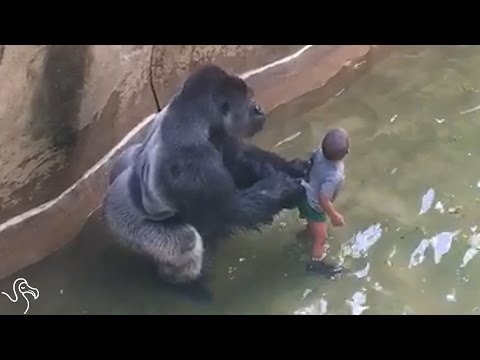In 2016, the world was shaken by the heartbreaking death of Harambe, a 17-year-old silverback gorilla at the Cincinnati Zoo, who was shot and killed after a toddler fell into his enclosure. The incident sparked an emotional global response—one filled with outrage, mourning, and deep questions about how humans interact with animals in captivity.
Viral footage of Harambe’s last moments was interpreted in many different ways. Some animal behaviorists suggested that Harambe was showing protective behavior, noting that gorillas are often gentle with young ones—even those not their own. Others, however, emphasized the danger posed by his sheer size and strength, arguing that the zoo made a split-second decision to protect the child from a potentially deadly situation.

Harambe’s death became a cultural flashpoint, igniting worldwide debate about the ethics of keeping wild animals in zoos. Critics questioned whether it’s ever truly humane to keep gorillas in captivity, calling for more natural environments—or even an end to captivity altogether. Supporters of zoos, on the other hand, defended the role these institutions play in conservation, education, and protecting endangered species like Harambe.
In the aftermath of the tragedy, zoos across the globe began reassessing their safety measures, including barrier designs, emergency protocols, and visitor awareness. Many implemented changes aimed at preventing a similar incident in the future.
Today, Harambe is remembered as more than just a victim of a tragic moment—he has become a symbol of the complex relationship between humans and wildlife. His story continues to spark conversation about compassion, responsibility, and how we can better share this planet with the animals that call it home.
Harambe’s legacy lives on—not just in headlines or internet memes, but in real efforts to improve animal welfare and ensure safer environments for both people and animals.





